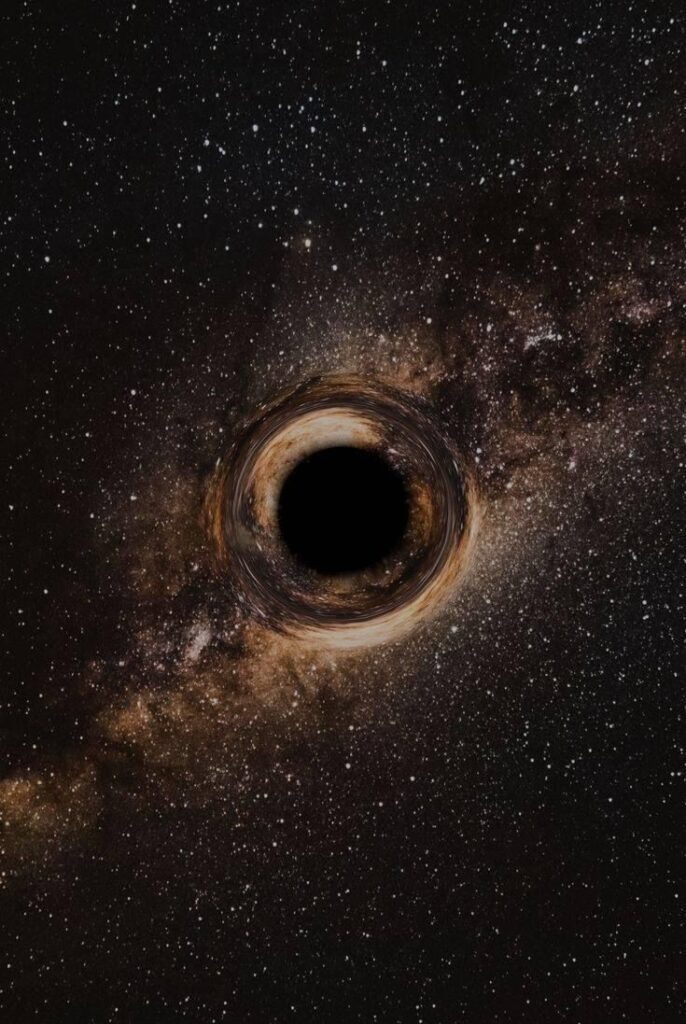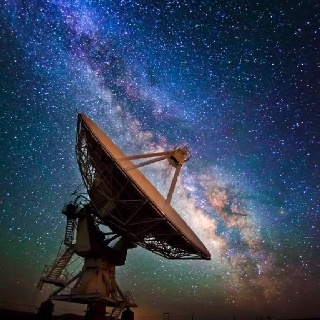Goodbye to Space-Time Limits: Black holes have always been the wildcards of our universe. They’re mysterious, powerful, and until recently, totally invisible. But what if I told you one of them is spinning so fast, it’s pushing the limits of what we thought was physically possible?
We’re talking about M87*—the monster black hole sitting at the heart of the Messier 87 galaxy, located about 55 million light-years from Earth. This same black hole made history in 2019 when it became the first ever to be photographed, thanks to the Event Horizon Telescope (EHT). Now, it’s turning heads again after astronomers found it’s spinning at nearly 90% of the maximum possible speed. That’s not just fast. That’s warp-speed fast. In this article, we’ll dive into what this spin means, how scientists figured it out, and why it might rewrite some of the rules of space and time.
Goodbye to Space-Time Limits
The discovery that M87* is spinning at nearly 90% of the speed limit for black holes is more than just an exciting headline. It confirms decades of theories, expands our ability to measure black holes, and pushes the boundaries of what we know about the universe. Whether you’re a 10-year-old dreaming about space or a seasoned scientist crunching data, this black hole just rewrote the cosmic rulebook.

| Feature | Details |
|---|---|
| Black Hole Name | M87* |
| Galaxy | Messier 87 (Virgo Cluster) |
| Spin Parameter | ~0.9 a (on a scale where 1.0 is max) |
| Mass | ~6.5 billion times the mass of our Sun |
| Jet Length | Over 5,000 light-years |
| Jet Speed | Close to the speed of light |
| Measurement Tool | Event Horizon Telescope (EHT) |
| Main Method | Doppler beaming and brightness asymmetry |
| Official Site | eventhorizontelescope.org |
What Does It Mean for a Black Hole to Spin?
First off, when scientists say a black hole is “spinning,” they’re talking about a mind-bending phenomenon called angular momentum. It’s a measure of how much the black hole is twisting the fabric of space-time around it.
You’ve seen whirlpools, right? Picture space itself being dragged into a vortex, pulled in faster and faster. That’s kind of what a spinning black hole does. And M87* isn’t just spinning a little—it’s going full beast mode, at about 0.9 on a scale from 0 to 1, where 1 is the maximum spin allowed by Einstein’s theory of general relativity.
If a black hole somehow exceeded that limit? Let’s just say we’d be in serious “breaking physics” territory.

Why M87* Is a Big Deal?
This black hole isn’t new to fame. It was the subject of the first-ever direct image of a black hole’s shadow, captured by the EHT in 2019. That image—fuzzy but historic—showed a glowing ring of gas and dust swirling around a pitch-black center. That center is the event horizon, the “point of no return” where gravity is so strong, not even light can escape.
What we didn’t know back then was just how fast that monster was spinning. Thanks to years of new data and complex modeling, we now know M87* is rotating at nearly the maximum theoretical speed.
And this matters. A lot.
Goodbye to Space-Time Limits: Why Black Hole Spin Matters?
Here’s where things get interesting. A fast spin isn’t just a fun fact. It influences everything from how black holes eat to how they shape entire galaxies.
1. It Powers Relativistic Jets
M87* is shooting out twin jets of energy that stretch across 5,000 light-years—longer than our entire solar system by a massive margin. These relativistic jets are powered by magnetic fields twisted by the black hole’s spin. The faster it spins, the more energy gets funneled into these cosmic firehoses.
These jets are so powerful they can blast matter out of the galaxy and regulate star formation. They act like cosmic leaf blowers, clearing out material that would otherwise form stars. That has a major effect on how galaxies like M87 evolve over time.
2. It Warps Space-Time
A spinning black hole drags everything near it—including space-time itself—in a process called frame-dragging. Imagine you’re standing on a spinning merry-go-round. If you try to walk in a straight line, you’ll find yourself being pulled around. The same thing happens in space near a spinning black hole.
This twisting of space-time isn’t just a neat trick. It’s been predicted by Einstein’s equations and was confirmed by experiments like NASA’s Gravity Probe B.
3. It Tells Us How Black Holes Grow
Black holes grow by either swallowing gas and stars or merging with other black holes. The spin can reveal their history. A high, steady spin like M87*’s suggests it’s been feeding slowly and steadily for billions of years—probably not the result of recent chaotic mergers.

How Scientists Measured the Spin?
You might be wondering: How on Earth do you measure the spin of something that doesn’t emit light and sucks everything in?
Good question. Here’s how they did it:
Step 1: Capture the Ring
Using the Event Horizon Telescope—a global network of radio telescopes acting as one giant dish—scientists took a picture of the glowing ring of gas and plasma surrounding M87*.
Step 2: Analyze Brightness Asymmetry
The side of the ring moving toward us appears brighter due to relativistic Doppler beaming (basically, light gets squished and appears stronger). The side moving away looks dimmer.
By analyzing the difference in brightness, scientists can figure out how fast the gas is moving—and that, in turn, reveals how fast the black hole must be spinning.
Step 3: Match with Simulations
They ran thousands of computer simulations based on Einstein’s equations and matched them with what they saw. The best fit? A black hole spinning at around 0.9 a.
That’s insanely fast—just shy of the theoretical limit of 1.0.

Why This Is a Milestone for Science?
This discovery does more than tell us about one black hole. It sets a new benchmark for measuring black holes across the universe.
Until now, spin was one of the hardest properties to pin down. With mass and size, you can measure stars or orbiting objects. But spin? That’s been a mystery—until M87* showed us the way.
It also helps validate the Blandford-Znajek process, the leading theory about how black holes launch jets using magnetic fields and spin.
Real-Life Analogy: Spin Like a Skater
Imagine an Olympic figure skater doing a spin. As they pull their arms in, they spin faster—conserving angular momentum. A black hole does the same thing, but on a cosmic scale. Instead of arms, it’s gobbling up gas and stars. And instead of pirouetting across the ice, it’s twisting space-time like a cosmic blender.
The Role of the Event Horizon Telescope
The EHT was key to all of this. It links radio observatories across the globe—from Hawaii to Spain to the South Pole—to act like a telescope the size of Earth. That’s how it gets the resolution needed to image something 55 million light-years away.
More discoveries are coming. The EHT is already eyeing Sagittarius A*—the black hole at the center of our own Milky Way—for spin measurements, too.
Not Gold, Not Platinum—This Man’s Mysterious Rock Was Worth More Than Both and Came from Space
Sustainable Education: How Schools Are Integrating Environmental Awareness into the Curriculum
Practical Applications
Even though this is deep space science, it has real-world impacts:
- In education, it’s a perfect case study in general relativity, Doppler effect, and observational astronomy.
- In tech, the imaging techniques developed for the EHT are being adapted for medical and satellite imaging.
- In careers, this opens up opportunities for data scientists, astrophysicists, engineers, and software developers in the growing field of radio astronomy.











